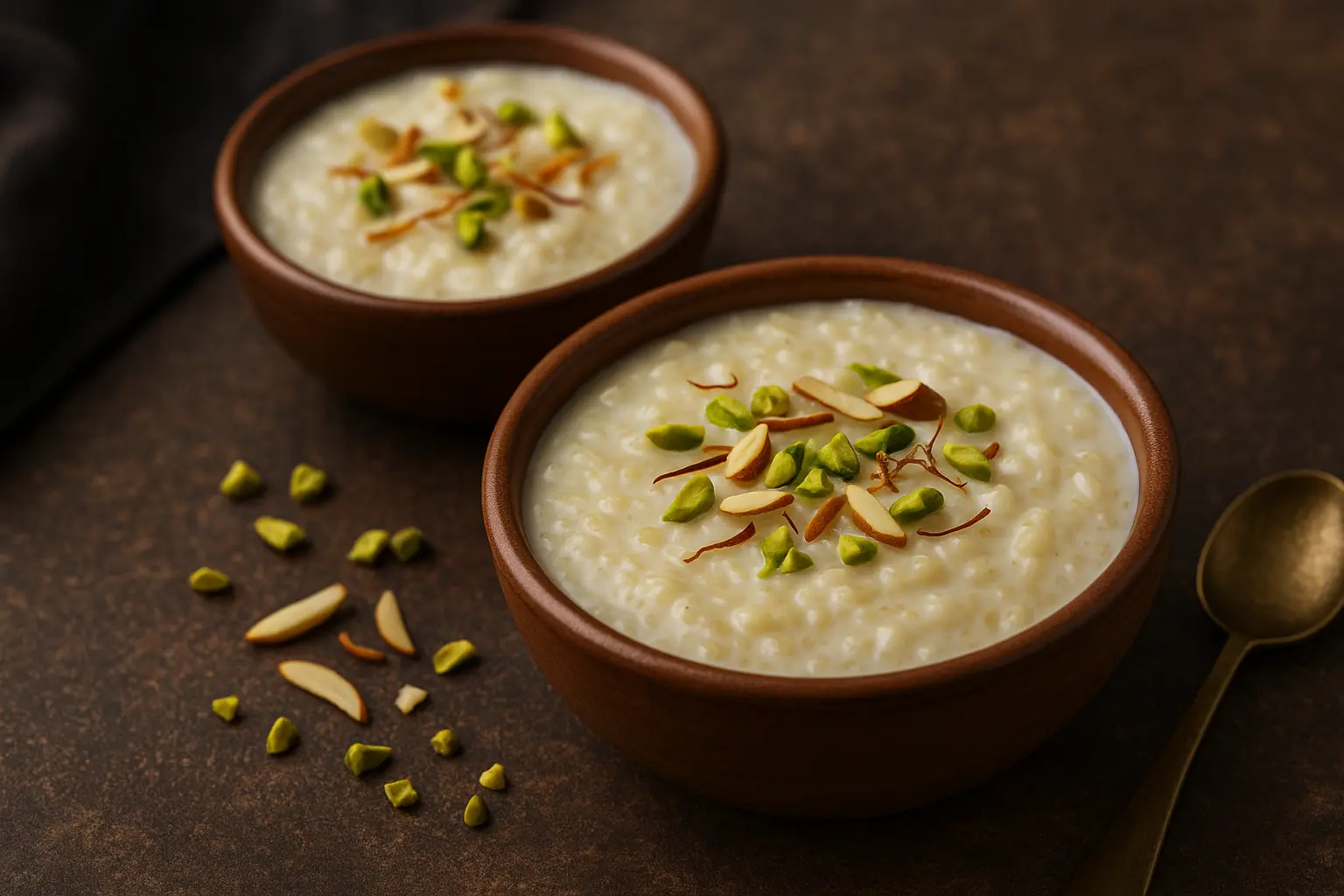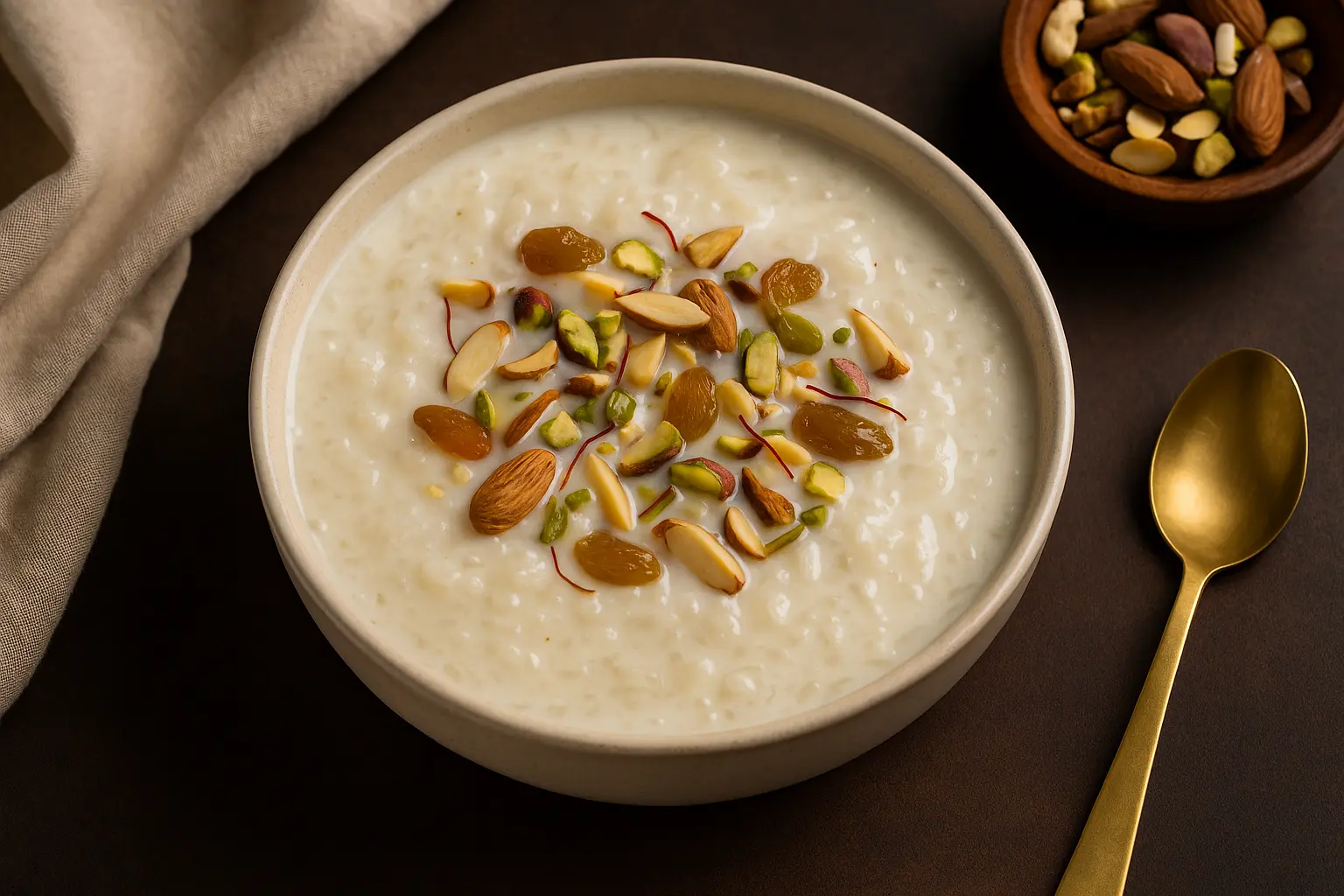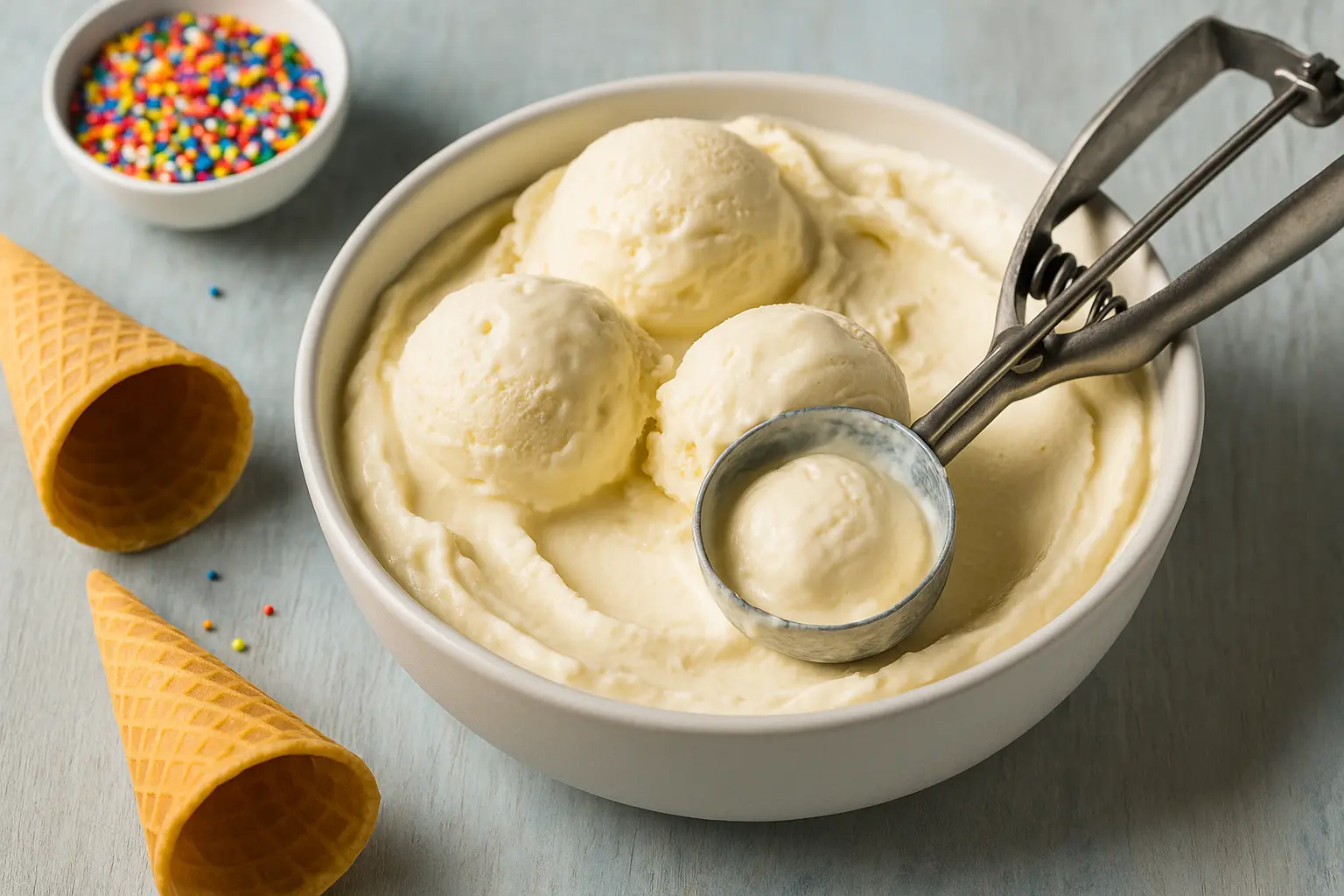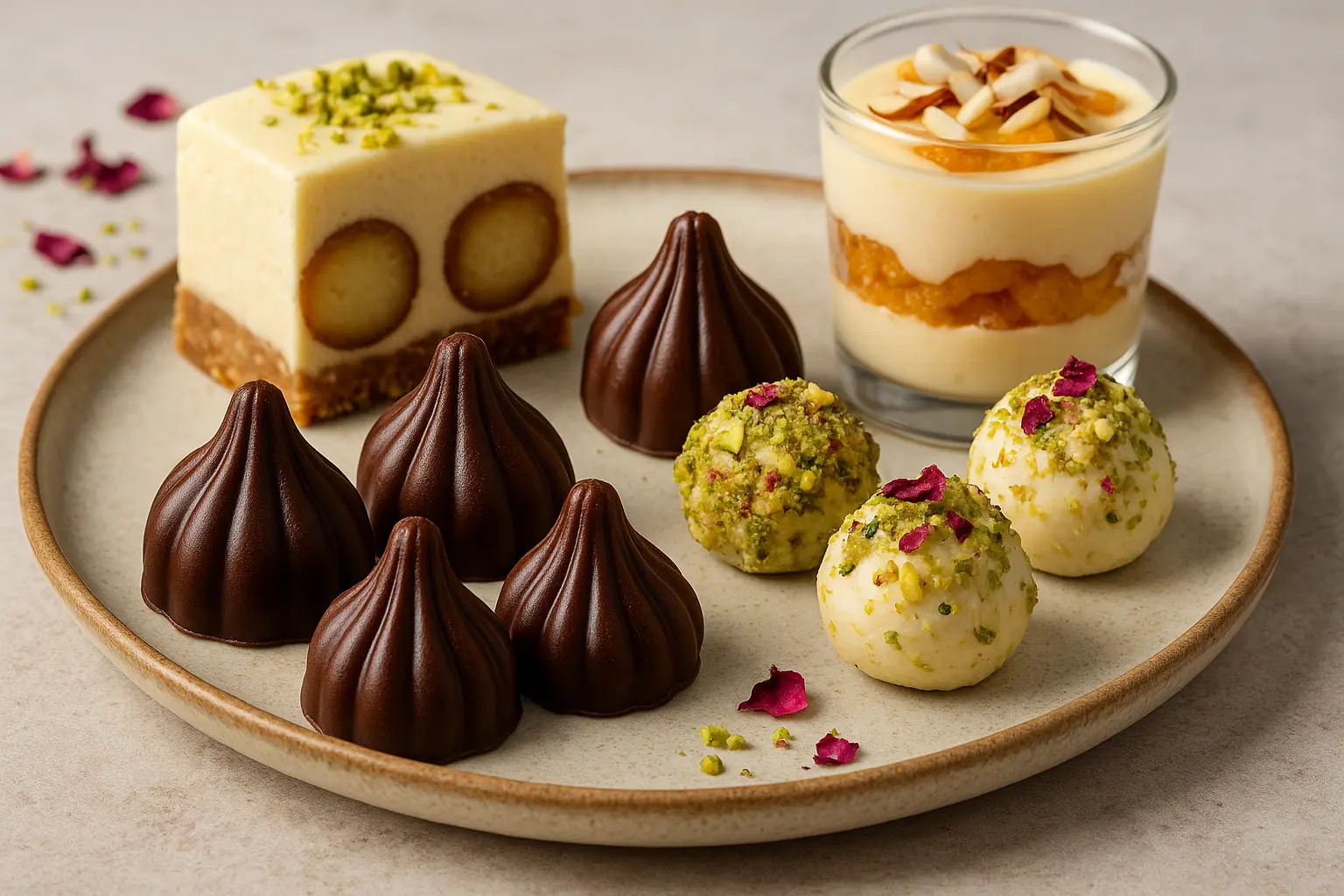Kheer is one of the most beloved desserts across India — a bowl of creamy rice pudding gently flavored with cardamom, saffron, and often topped with nuts. Traditionally, it’s made with full-fat milk simmered for a long time until it thickens into a rich and indulgent treat.
But what if you can’t or don’t want to consume dairy? Whether you’re vegan, lactose-intolerant, or simply looking for lighter alternatives, the good news is that you don’t have to miss out on the joy of kheer. With the right plant-based ingredients and a few thoughtful adjustments, you can enjoy a comforting Indian kheer without dairy that tastes just as creamy, indulgent, and festive as the classic version.
This guide takes you deep into everything you need to know: from the cultural background of kheer to step-by-step recipes using dairy alternatives, flavor variations, nutritional benefits, and even troubleshooting tips.

🌾 A Brief History of Kheer
Kheer has been part of Indian culinary tradition for centuries. It is believed to have originated in South India as "Payasam," a temple offering made with rice, jaggery, and coconut milk. Over time, with the availability of milk from cows and buffaloes, the recipe spread across regions and adapted to local tastes.
North India: Kheer made with rice and cow’s milk, flavored with cardamom and saffron.
South India: Payasam with coconut milk and jaggery.
East India: Payesh, a Bengali version, often made with date palm jaggery (nolen gur) in winter.
West India: Variations with vermicelli (seviyan) or broken wheat.
This rich diversity shows that kheer is not tied to one fixed recipe. That’s why creating a dairy-free version is not a compromise but rather a continuation of the dish’s evolving story.
🥛 Why Go Dairy-Free?
There are many reasons people choose to avoid dairy, and kheer adapts beautifully to those needs.
Lactose Intolerance: Millions of people struggle to digest lactose, making traditional milk-based desserts uncomfortable to eat.
Vegan Lifestyle: Plant-based living excludes animal products, including dairy, but doesn’t mean giving up on favorite sweets.
Health Reasons: Some cut down on dairy for skin health, digestive comfort, or cholesterol management.
Ethical & Environmental Choices: Plant-based milks are often more sustainable and align with cruelty-free values.
🌿 Best Plant-Based Milks for Kheer
Not all dairy alternatives behave the same way when heated. Here are the most effective options for creamy dairy-free kheer:
Coconut Milk: Naturally rich and creamy, adds a tropical note. Best for festive kheer.
Almond Milk: Mild and nutty, pairs well with cardamom and saffron.
Cashew Milk: Silky and thicker than almond milk, a great dairy substitute.
Oat Milk: Neutral taste, blends smoothly but may need thickening with starch.
Soy Milk: Creamy with a protein boost, though slightly beany if unsweetened.
Homemade Blends: Many cooks combine almond + coconut for balance.
Tip: Always choose unsweetened varieties so you can control the sweetness.
🍚 Choosing the Right Grain
While rice is traditional, other grains and ingredients also make delicious dairy-free kheer:
Basmati Rice: Long grain, fragrant, common in North India.
Gobindobhog or Short-Grain Rice: Used in Bengal for a creamier texture.
Vermicelli (Seviyan): A lighter, noodle-based version.
Sabudana (Tapioca Pearls): Popular during fasting.
Millets or Quinoa: Modern, nutritious alternatives.
Each grain offers a different mouthfeel, but the same slow cooking principle applies.
🔥 Cooking Methods for Dairy-Free Kheer
There are three main approaches to making this dessert:
1. Stovetop Traditional Style
Simmer plant-based milk slowly with pre-cooked or soaked rice.
Stir frequently to prevent sticking.
This method yields a deeper flavor.
2. Instant Pot / Pressure Cooker
Great for busy days.
Cooks rice and milk together under pressure.
Finish with flavoring after pressure release.
3. Quick Blender-Assisted Version
Blend soaked rice with part of the plant milk.
Cook until thickened, then add remaining milk.
Creamy texture in less time.
🍯 Sweeteners Beyond Sugar
Dairy-free kheer gives you flexibility in sweeteners:
Jaggery: Earthy and caramel-like, traditional in many regions.
Coconut Sugar: Complements coconut milk versions.
Maple Syrup: Modern twist with smoky sweetness.
Dates Paste: Naturally sweet and nutrient-rich.
Stevia/Erythritol: For diabetic-friendly kheer.
🥥 Classic Vegan Kheer Recipe
Ingredients (4 servings):
½ cup basmati rice, washed and soaked for 30 minutes
3 cups unsweetened almond or coconut milk
½ cup jaggery or sugar (adjust to taste)
¼ tsp cardamom powder
A few saffron strands soaked in 2 tbsp warm almond milk
2 tbsp chopped nuts (almonds, pistachios, cashews)
1 tbsp raisins
1 tsp coconut oil or vegan ghee alternative (optional)
Steps:
Cook soaked rice in 1 cup water until soft.
Add almond/coconut milk and simmer gently.
Stir continuously for 15–20 minutes until it thickens.
Add jaggery, cardamom, and saffron. Stir well.
Garnish with nuts and raisins fried lightly in coconut oil.
Serve warm or chilled.
🌸 Flavor Variations
Rose Kheer: Add rose water and dried rose petals.
Chocolate Kheer: Stir in vegan cocoa powder and dark chocolate.
Fruit Kheer: Mango puree in summer, apple or banana in winter.
Nutty Kheer: Blend cashew cream into the base for richness.
Spiced Kheer: Add a cinnamon stick or nutmeg.
🎉 Perfect for Festive Occasions
Kheer without dairy is ideal for festivals like Diwali, Holi, Eid, or Navratri, where inclusivity matters. A vegan version ensures everyone at the table can enjoy it, regardless of dietary needs.
🥗 Nutritional Insights
Calories: ~220 per serving (depends on milk & sweetener).
Protein: Higher with soy milk; moderate with almond or oat.
Fats: Healthy fats from nuts and coconut.
Micronutrients: Iron from jaggery, calcium from fortified plant milk.
⚖️ Common Mistakes & Fixes
Too Runny: Cook longer or add a slurry of cornstarch/arrowroot.
Too Thick: Add extra warm plant milk gradually.
Grainy Texture: Use short-grain rice or soak well before cooking.
Separation of Milk: Lower the flame; avoid high-heat boiling.
🌍 Global Inspirations
Dairy-free kheer aligns beautifully with other cultures’ rice puddings:
Middle Eastern Muhallabia: Rice flour pudding with rose water.
Spanish Arroz con Leche: Can be adapted with almond milk.
Thai Coconut Sticky Rice: Sweet, rich, coconut-based dessert.
These global cousins show how universal comfort in a bowl of rice pudding really is.
🧑🍳 Practical Tips for Beginners
Always soak rice for better creaminess.
Use heavy-bottomed pans to avoid burning.
Stir frequently — patience is key.
Make extra! Kheer tastes even better the next day after chilling.
📝 Conclusion
A comforting bowl of dairy-free Indian kheer proves that plant-based cooking doesn’t mean giving up tradition. By choosing coconut, almond, or other plant milks, you can still enjoy a dessert that’s rich, festive, and deeply nostalgic.
It’s more than just a recipe — it’s a way to embrace inclusivity, health, and creativity in the kitchen. Whether for a grand Diwali feast or a quiet evening craving something sweet, this vegan kheer promises comfort in every spoonful.
Leave a comment
Your email address will not be published. Required fields are marked *




















